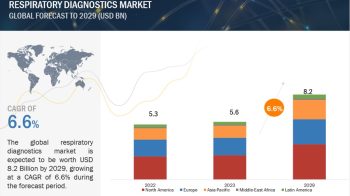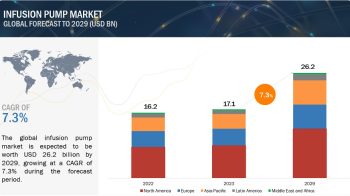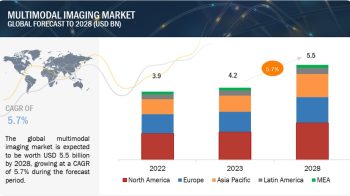The global veterinary diagnostics market is expected to reach to USD 3.62 billion by 2022 from an estimated USD 2.32 billion in 2017, at a CAGR of 9.3%. Some of the major factors driving the growth of the market include growing prevalence of animal diseases, rising demand for animal-derived food products, rising pet insurance purchases, growing animal health expenditure, increasing number of veterinary practitioners & their income levels in developed economies, and growth in the companion animals & livestock population.
In this report, the market is segmented on the basis of product, technology, type of animal, end user, and region. On the basis of technology, the veterinary diagnostics market is segmented into clinical biochemistry, urinalysis, immunodiagnostics, hematology, molecular diagnostics, and other animal health diagnostics. The immunodiagnostics segment is expected to register the highest growth during the forecast period. The growth of this segment is mainly attributed to the advantages (rapid, sensitive, and cost effectiveness) offered by the immunodiagnostic tests such as lateral flow test and ELISA tests. The more recent innovations in the immunodiagnostic tests are focused towards addressing customer demands related to automation and technological developments for easy and comprehensive immunodiagnostic analysis. Cost is also a key area of concern among end users for immunodiagnostic tests and is increasingly becoming a focus area for veterinary diagnostic manufacturers to develop new products in the veterinary immunodiagnostics segment.
On the basis of type of animal, the market is segmented into livestock and companion animals. The companion animals segment is expected to register the highest growth during the forecast period. Growth in this segment is attributed to the rising number of companion animals across the globe, willingness of owners to spend more on their pets, rising pet insurance purchase, and availability of cheaper, easy to handle, & point-of-care diagnostic tests for companion animals.
Based on end users, this market is categorized into reference laboratories, veterinary hospitals & clinics, point-of-care/in-house testing, and academic institute & universities. The point-of-care/in-house testing provides portable, user-friendly, and accurate diagnostic tests and instruments for both companion and food-producing animals. POC tests are designed for use in farms outside the physical facilities of clinical laboratories. Similarly, there is a growing trend towards the application of POC diagnostic testing on companion animals as well. Therefore, the POC/in-house testing segment is expected to register the highest growth during the forecast period and provides a significant opportunity for the players to develop technically advanced POC instruments and tests.
Geographically, the Asia-Pacific (APAC) market is expected to witness the highest growth in the next five years. This high growth can be attributed to the growing livestock population, increasing pet adoption, rising awareness about animal health, progressive urbanization, and growing animal-derived food product consumption in this region.
Over the past few years, portable diagnostic instruments for POC services have emerged as a critical component for diagnosing animal diseases. Major players in the veterinary diagnostics market are focusing on launching portable instruments for field veterinarians. For instance, in March 2014, IDEXX Laboratories, Inc. launched its Catalyst One Chemistry Analyzer, which combines chemistry analysis, electrolyte analysis, and T4 analysis into a single sample run. The product offers POC diagnosis and easy accessibility for all veterinary practices. Similarly, in September 2013, Heska Corporation (U.S.) introduced the Element POC portable blood gas-electrolyte analyzer.


